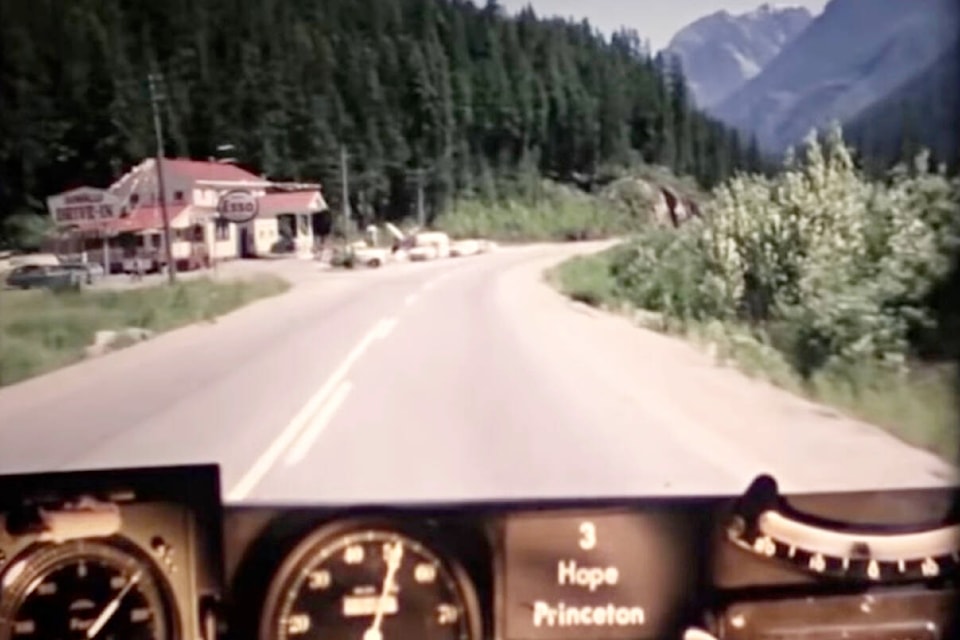Despite its popularity in movies, television, and fiction, time travel is not yet a reality, but an unlikely source has made possible the next best thing.
B.C.’s Ministry of Transportation TranBC website features a page called the , with links to a number of home movies that were created in 1966. They are not quite videos; the website explains that they are properly called “photologs”, and were created from a series of still photographs that were taken by a camera mounted on the dashboard of a car. As the car travelled along the highway, the camera would take a photograph every 80 feet or so.
These photos were then run together to create a single film, giving the impression of continuous travel. The photologs were used to capture road condition information from more than 8,000 kilometres of highway across the province, thus giving Highways engineers the ability to study a particular stretch of road without having to travel into the field. As far as can be determined, the BC Highways Department (as it was then known) was the first organization in Canada to collect information in this way, in order to create a visual record of the province’s highways.
The website notes that looking back on the photologs now, almost 60 years after they were taken, reveals a lot more than just the condition of the pavement. They capture incredible glimpses of B.C.’s highways in days gone by, as well as a look at buildings and landmarks along the way that in many cases are long gone.
For example, the road trip along shows the Hope Slide site less than two years after the devastating slide on Jan. 9, 1965. The website notes that Highways crews worked for 13 days straight to reopen the highway, cutting a path through the debris field to reconnect the road. It is a different route to the one that exists today: in the early 1980s the highway alignment was rerouted around the base of the debris field, instead of through it.
A little further along, time travellers can see the long-gone Sumallo Lodge, which played a role in the Hope Slide tragedy; Manning Park as it was in 1966; the (also long-gone) Shell gas station which used to sit high above the Similkameen River and overlook it at a wide bend in the highway; and much more.
Other road trips from 1966 include ; ; ; ; ; and . There is also a fascinating journey from , showing the city as it was more than half-a-century ago.
Many of the photologs are featured on the TranBC website, and you can click on the different highways to learn more about their history and see maps and historical pictures. All 34 of the photologs that have been digitized are available to view on the (see “BC Road Trip Time Machine” under Playlists).
When watched at normal playback speed the videos are in more or less “real” time, which means that some roadside details can be lost. The videos can be slowed down by clicking on the gear-shaped icon in the bottom right corner of the video screen. Click on “Playback speed” and choose the desired setting; .5, or even .25, is the best speed for catching more of the details, including the many now-vintage vehicles sharing the road.
Also on the TranBC BC Highway History page () are looks back at the Garbage Gobblers, the Hope Slide, the construction of the Fraser Canyon Highway in historical pictures, and more, including historic commercial weigh scale stations around the province (). They were small, unassuming structures that played a big role in road safety as commercial transportation of goods exploded after World War II.
Weigh scales were built along major highways and trucks were mandated to stop at them, as a way to ensure that they were operating safely. The page includes a number of photographs from the early- to mid-1960s, including two of the weigh scale that was in Cache Creek on Highway 1 east at the junction with Highway 97; the Gateway Park with Cariboo Sam now occupies the site.
editorial@accjournal.ca
Like us on and follow us on



